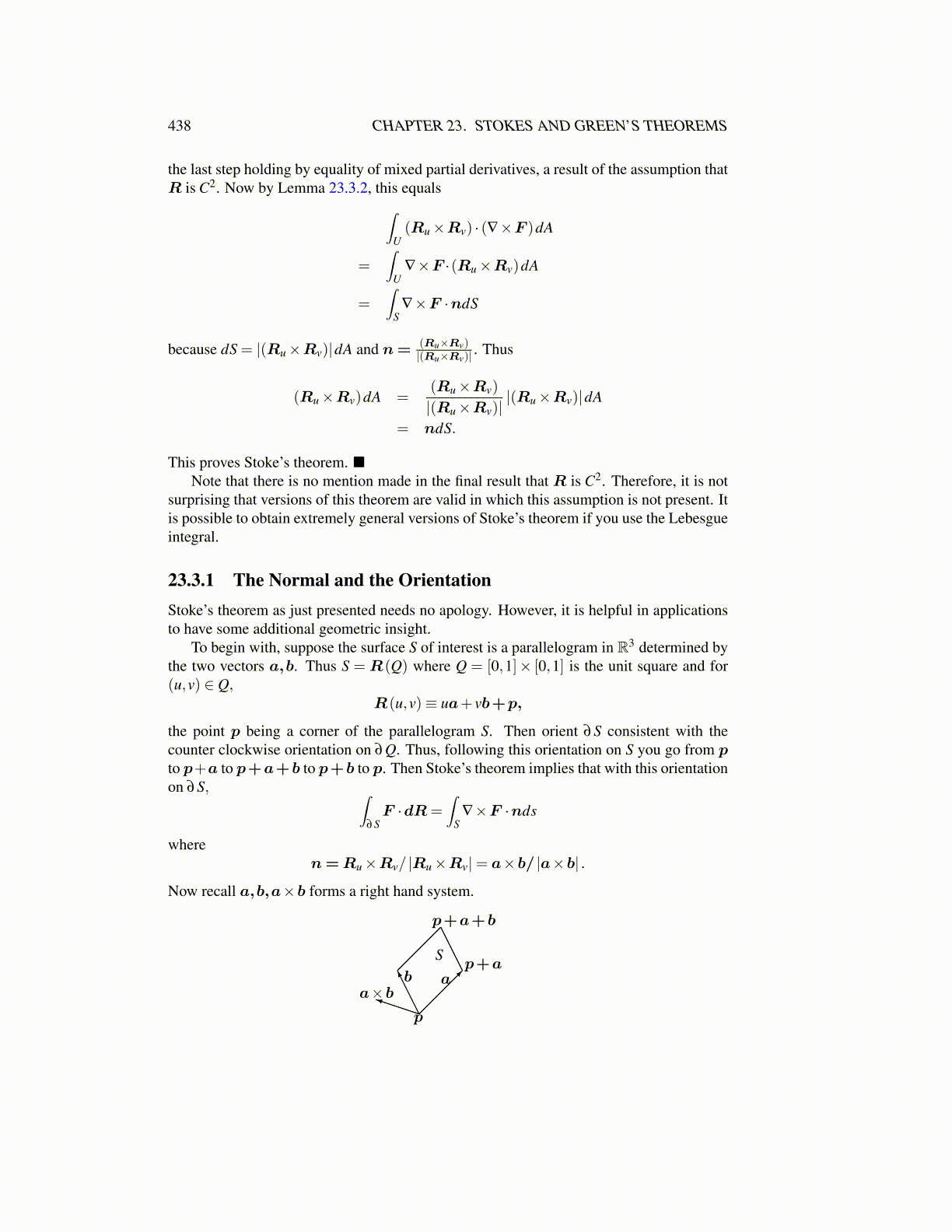
438 CHAPTER 23. STOKES AND GREEN’S THEOREMS
the last step holding by equality of mixed partial derivatives, a result of the assumption thatR is C2. Now by Lemma 23.3.2, this equals∫
U(Ru×Rv) · (∇×F )dA
=∫
U∇×F ·(Ru×Rv)dA
=∫
S∇×F ·ndS
because dS = |(Ru×Rv)|dA and n= (Ru×Rv)|(Ru×Rv)| . Thus
(Ru×Rv)dA =(Ru×Rv)
|(Ru×Rv)||(Ru×Rv)|dA
= ndS.
This proves Stoke’s theorem. ■Note that there is no mention made in the final result that R is C2. Therefore, it is not
surprising that versions of this theorem are valid in which this assumption is not present. Itis possible to obtain extremely general versions of Stoke’s theorem if you use the Lebesgueintegral.
23.3.1 The Normal and the OrientationStoke’s theorem as just presented needs no apology. However, it is helpful in applicationsto have some additional geometric insight.
To begin with, suppose the surface S of interest is a parallelogram in R3 determined bythe two vectors a,b. Thus S = R(Q) where Q = [0,1]× [0,1] is the unit square and for(u,v) ∈ Q,
R(u,v)≡ ua+ vb+p,
the point p being a corner of the parallelogram S. Then orient ∂S consistent with thecounter clockwise orientation on ∂Q. Thus, following this orientation on S you go from pto p+a to p+a+b to p+b to p. Then Stoke’s theorem implies that with this orientationon ∂S, ∫
∂SF ·dR=
∫S
∇×F ·nds
wheren=Ru×Rv/ |Ru×Rv|= a×b/ |a×b| .
Now recall a,b,a×b forms a right hand system.
aba×b
p+a
p+a+b
S
p